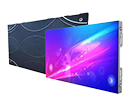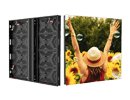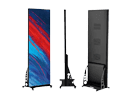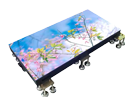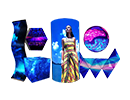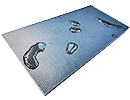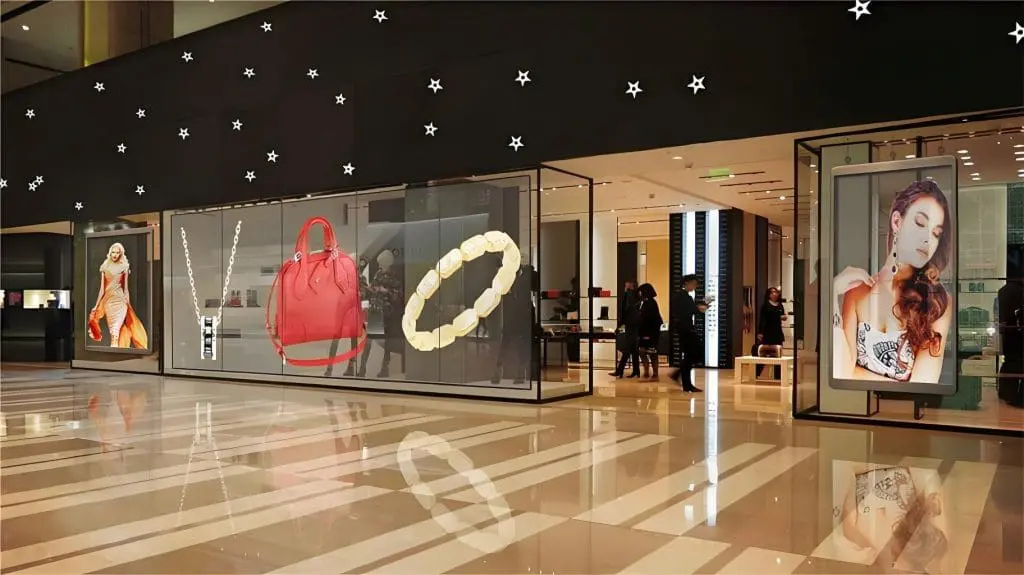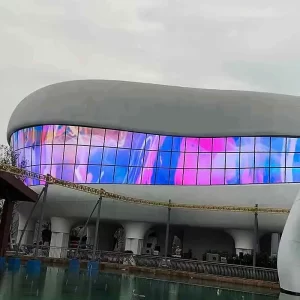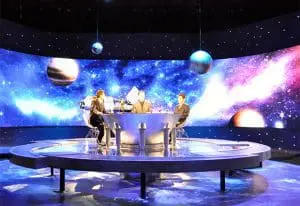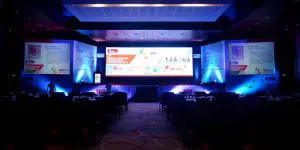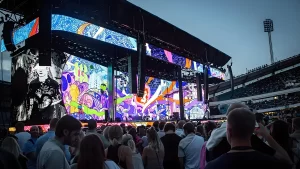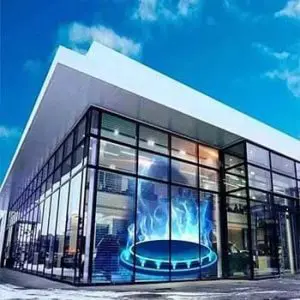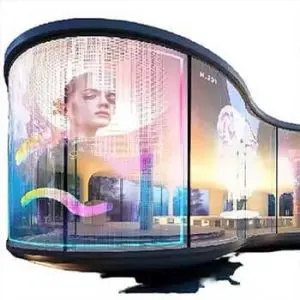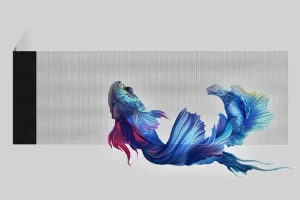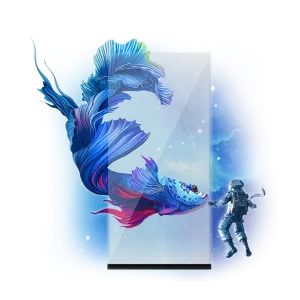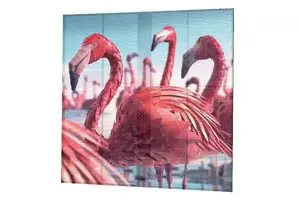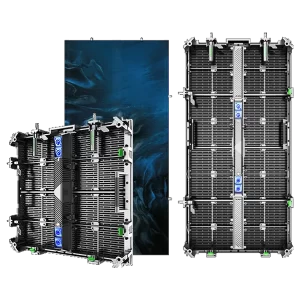Transparent LED Screen: Ultimate Guide to Features, Benefits, and Applications
Transparent LED screens represent the next generation of digital displays, blending cutting-edge technology with sleek design. These screens display vibrant content while maintaining see-through visibility, making them ideal for storefronts, glass walls, and creative installations. Their functionality and aesthetics have made transparent LED displays popular for businesses, events, and architectural projects. With the global market for transparent LED screens projected to reach $2 billion by 2027 (source: Grand View Research), they offer innovative solutions for modern visual needs.
This comprehensive guide explores the features, applications, benefits, and key considerations for transparent LED screens, helping you decide why they’re perfect for your project.
What Is a Transparent LED Screen?
A transparent LED screen is a digital display that allows light to pass through while projecting dynamic content like videos, images, and animations. Built with LED strips or mesh, these screens offer 50%–90% transparency, providing unobstructed views behind them. Unlike traditional LEDs, transparent LED displays are lightweight, elegant, and integrate seamlessly with glass surfaces or open spaces, ideal for modern architecture and retail.
Key Features of Transparent Glass LED Screens
Glass LED walls boast advanced features for versatility:
- High Transparency: 50%–90% levels preserve natural light and background visibility.
- Lightweight Design: Thin LED strips or mesh reduce weight for easy glass mounting.
- Vibrant Visuals: High contrast and color accuracy despite transparency.
- Energy Efficiency: 30%–50% less power than traditional displays.
- Modular and Customizable: Adapt to sizes, shapes, and curved surfaces.
- Easy Installation: Quick setup on windows or facades.
- Weather Resistance (Outdoor Models): IP65-rated for rain, dust, and UV protection.
These features make transparent LED walls superior for aesthetic integrations.
Applications of Transparent LED Display Screens
Transparent LED display screens are used in diverse settings:
- Retail and Storefronts
- Window Displays: Glass LED screens turn windows into dynamic ads without blocking views.
- Product Showcases: Engage customers with visuals while keeping stores open.
- Architecture and Interior Design
- Building Facades: Integrate into glass walls for futuristic designs.
- Interior Walls: Decorative partitions in offices or hotels.
- Events and Exhibitions
- Stage Design: Eye-catching backdrops with clear views.
- Trade Shows: Open, inviting booth displays.
- Airports and Transportation Hubs
- Information Displays: Schedules without obstructing spaces.
- Automotive Showrooms
- Glass LED Screens: High-tech car showcases on windows.
- Museums and Art Installations
- Interactive Displays: Blend digital with physical exhibits.
Case Study: Apple’s flagship stores use transparent LED screens for window displays, increasing foot traffic by 20%.
Benefits of Glass LED Screens
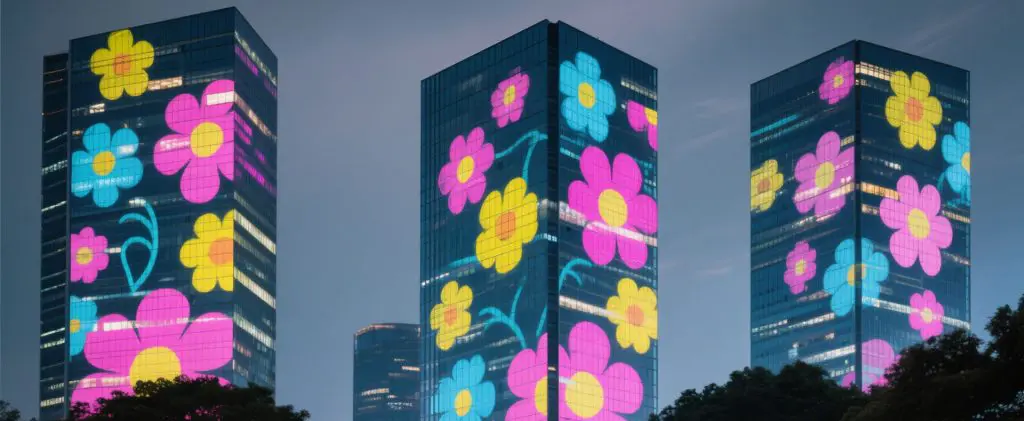
- Space Optimization: Maintain views and light in small areas.
- Unique Aesthetic Appeal: Futuristic design enhances branding.
- Enhanced Branding: Dynamic content captures attention effectively.
- Energy Efficiency: Eco-friendly with low power use.
- Customization: Tailor transparency, size, and shape.
- Long-Term Durability: 50,000–100,000 hour lifespan.
- High ROI: Boosts engagement, with studies showing 35% higher customer interaction.
Types of Transparent LED Walls
| Type | Description | Best For |
|---|---|---|
| Indoor Glass LED Screens | High transparency, lower brightness (800–2,500 nits) | Storefronts, museums. |
| Outdoor Transparent LED Walls | Weatherproof, high brightness (5,000–7,000 nits) | Facades, outdoor ads. |
| Curved Transparent LED Walls | Flexible for curved surfaces | Architectural designs. |
| Flexible Glass LED Screens | Bendable for unique shapes | Art installations, events. |
Technical Specifications of Transparent LED Screens
| Specification | Details |
|---|---|
| Transparency | 50%–90%. |
| Pixel Pitch | P2.8–P10 for resolution. |
| Brightness | 800–7,000 nits (indoor/outdoor). |
| Refresh Rate | ≥3,840 Hz for smooth visuals. |
| Viewing Angle | 140°–160°. |
| Weatherproofing | IP65 for outdoor. |
| Power Consumption | 30%–50% less than traditional. |
| Weight | 6–12 kg/m². |
| Lifespan | 50,000–100,000 hours. |
Factors to Consider When Choosing a Transparent LED Screen
- Installation Location: Indoor vs. outdoor; ensure weather resistance.
- Transparency Level: Higher for glass walls; lower for brighter visuals.
- Pixel Pitch: P2.8–P4 for close; P6–P10 for distance.
- Screen Size: Modular for scaling.
- Brightness: Match to lighting conditions.
- Budget: Balance features with long-term value.
Cost of Transparent LED Screens
Costs vary by size and specs (2023 estimates):
- Cost Per Square Meter
Pixel Pitch Transparency Level Cost per m² (USD) P2.8–P4 70%–80% $500–$5,000 P6–P10 50%–70% $500–$3,000 - Additional Costs
- Installation: $5,000–$20,000.
- Control System: $2,000–$10,000.
ROI: Transparent LED screens often recover costs in 1-2 years through branding.
Why Choose Glass LED Screens?
- Sleek Design: Futuristic appeal for modern spaces.
- Space-Saving: Seamless integration with glass.
- Versatile Applications: From retail to events.
- High ROI: Cost-effective with durability.

